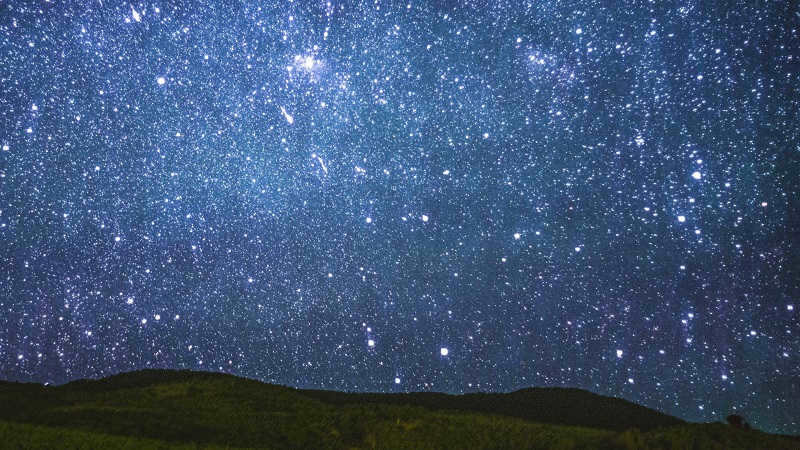We find ourselves in a youthful Universe that is abundant with youthful stars. Each of these stars will undergo various phases of stellar evolution, either by fusing hydrogen in their cores and undergoing an explosion or gradually losing heat. As the world ages by a thousandfold, the once brilliant stars will be succeeded by enigmatic black dwarfs or black holes, while certain stars are fated to disperse into the vast cosmic abyss.
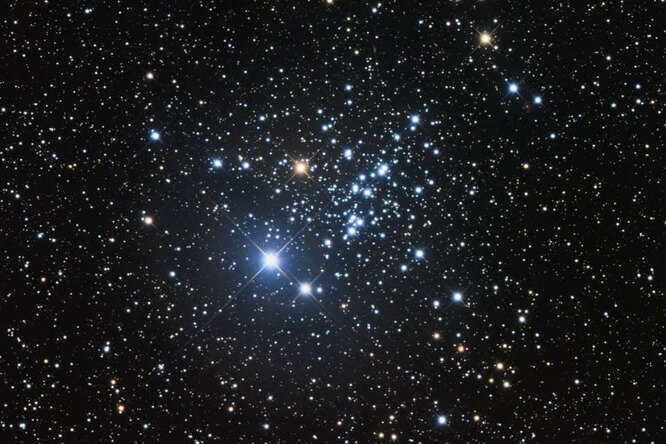
In case enough matter accumulates in any part of the Universe, it gets compressed into a dense lump that initiates a thermonuclear reaction. This is how stars start burning. The first ones appeared in the darkness of the early Universe approximately 13.7 billion (13.7*10 9 ) years ago, while our Sun came into existence only around 4.5 billion years ago. The duration of a star’s life and the events that unfold at the end of its life cycle are determined by its mass.
The duration of a star’s main sequence phase relies on its mass. If the star is massive and heavy, it will rapidly progress to the red giant stage and eventually depart from the main sequence due to a supernova explosion or the creation of a white dwarf. However, as long as the star sustains the thermonuclear reaction that converts hydrogen into helium, it remains on the main sequence.
The destiny of colossal celestial bodies
The most gigantic and immensely massive stars burn out rapidly and detonate into supernovae. Following a supernova explosion, a neutron star or a black hole remains, surrounded by the matter expelled by the tremendous energy of the explosion, which then serves as the building blocks for new stars. Among our closest stellar companions, Betelgeuse, for instance, is destined for such a fate, although the precise timing of its explosion is incalculable.
A neutron star is an awe-inspiring physical phenomenon. The core of a exploded star is compressed – similar to gas in an internal combustion engine, albeit on a much grander scale and with remarkable efficiency: a sphere with a diameter of hundreds of thousands of kilometers shrinks to a mere 10 to 20 kilometers across. The force of compression is so immense that electrons merge with atomic nuclei to create neutrons – hence the name.
The matter in this compression undergoes a significant increase in density, approximately by 15 orders of magnitude. The temperature also reaches astonishing levels, with the center of the neutron star reaching an unimaginable 10 12 K, while the periphery reaches 1 000 000 K. A portion of this immense energy is emitted as photon radiation, while another portion is carried away by neutrinos that are produced within the core of the neutron star. Despite efficient neutrino cooling, the cooling process of a neutron star is incredibly slow, taking anywhere from 10 16 to 10 22 years for the energy to be completely depleted. The end result of a cooled neutron star is uncertain and impossible to observe, as the universe is still too young for this phenomenon. However, there is a hypothesis that suggests a black hole may form in place of the cooled star.
The destiny of medium-sized stars
Medium-sized stars, unlike their larger counterparts, have a longer lifespan while they are on the main sequence. However, once they depart from this stage, they experience a much faster demise compared to their neutron relatives. It is worth noting that the vast majority of stars in the Universe, over 99%, will never undergo an explosive transformation to become black holes or neutron stars. This is due to the fact that their cores are not large enough to support such cosmic spectacles. Instead, intermediate-mass stars go through a process of turning into red giants towards the end of their lives. Depending on their mass, these stars can either become white dwarfs, explode, disperse completely, or transform into neutron stars.
For the youngest ones
When it comes to the cooling down of the tiniest stars, like our closest neighbor, the red dwarf Proxima Centauri, science has much less knowledge compared to supernovae and black dwarfs. The process of thermonuclear fusion in their cores is slow, and they stay on the main sequence for a longer time than others. According to some calculations, they can remain in this phase for up to 10 12 years. After that, they are expected to transform into white dwarfs and continue to emit light for another 10 14 – 10 15 years before eventually becoming black dwarfs.
Considering the lifespan of these stars, take a moment to ponder the likelihood of intelligent life and life in general emerging right at the beginning of the universe’s existence – which is merely around 13 billion years, a relatively short period according to “local” concepts.
TechInsider Network Edition
Founder of "Fashion Press" LLC: 119435, Moscow, Bolshoi Savvinsky per. 12, p. 6, floor 3, room II. 6, floor 3, room II;
Editorial office location: 119435, Moscow, Bolshoi Savvinsky per. 12, p. 6, str. 6, floor 3, room II; Editorial office location: 119435, Moscow, Bolshoi Savvinsky per. 6, floor 3, room II;
Chief Editor: Nikita Vasilenok
Editorial office email: [email protected]
Editorial office telephone: +7 (495) 252-09-99
Content rating: 16+
The online publication is registered with the Federal Service for Supervision in the Sphere of Communications, Information Technologies and Mass Media, registration number and date of registration decision: series EL No. FS 77 – 84123 dated November 09, 2022.
© 2007 – 2023 Fashion Press LLC
When the User uploads content on the Site, they are giving "Fashion Press" LLC the right to use, reproduce, distribute, create derivative works, display the materials, and bring them to the public’s attention.
Supernovae are celestial bodies that conclude their lifecycle with a catastrophic explosion.
Physics behind supernovae
Type II supernovae explained
According to contemporary theories, the process of thermonuclear fusion leads to the gradual enrichment of heavy elements in the inner regions of a star. As thermonuclear fusion occurs and heavy elements form, the star undergoes shrinkage, causing the temperature at its core to increase (a result of the negative heat capacity of gravitating ungenerated matter). If the mass of the star’s core is sufficiently large (ranging from 1.2 to 1.5 solar masses), the process of thermonuclear fusion culminates in the creation of iron and nickel nuclei. The formation of an iron nucleus initiates within the silicon shell. This core grows over the course of a day and rapidly collapses in less than 1 second once it reaches the Chandrasekar limit. The Chandrasekar limit for a core falls within the range of 1.2 to 1.5 solar masses. Matter within the star begins to fall inward, with the repulsion of electrons unable to halt the descent. The central core becomes increasingly compressed, leading to the initiation of neutronization reactions under the pressure. Protons start to absorb electrons, transforming into neutrons. This rapid conversion results in the generation of neutrinos, which carry away a significant amount of energy (referred to as neutrino cooling). The matter continues to accelerate, fall, and contract until the repulsion between atomic nucleus nucleons (protons and neutrons) comes into effect. The compression actually surpasses the limit, as the falling matter exceeds the equilibrium point due to the elasticity of nucleons by 50% (referred to as “maximum clenching”). The collapse of the central nucleus transpires so swiftly that a rarefaction wave forms around it. Subsequently, the shell also rushes towards the center of the star following the core. At this point, the “compressed rubber ball gives back,” and a shock wave propels towards the outer layers of the star at speeds ranging from 30,000 to 50,000 km/sec. The outer regions of the star are expelled in all directions, leaving behind a compact neutron star or black hole at the center of the exploded region. This phenomenon is known as a type II supernova explosion. The power and other parameters of these explosions vary, as they depend on the mass and chemical composition of the exploding stars. Some data suggest that the energy released during a type II supernova explosion is not significantly greater than that of a type I explosion, as a proportional portion of the energy is absorbed by the shell. However, this may not always be the case.
Type Ia supernovae
Type Ia supernovae are a type of supernova that occur in binary star systems. These supernovae are characterized by their peak brightness and lack of hydrogen in their spectra. They are thought to occur when a white dwarf star in a binary system accretes enough mass from its companion star to reach the Chandrasekhar limit, causing it to undergo a thermonuclear explosion. This explosion releases a tremendous amount of energy, causing the star to brighten significantly and briefly outshine its entire host galaxy. Type Ia supernovae play a crucial role in cosmology, as they are used as standard candles to measure cosmic distances and help determine the rate at which the universe is expanding.
The mechanism of Type Ia (SN Ia) supernovae flares appears to be somewhat different. This is known as a thermonuclear supernova, where the explosion is caused by thermonuclear fusion in the dense carbon-oxygen core of the star. The progenitors of SN Ia are white dwarfs with masses close to the Chandrasekar limit. It is widely accepted that these stars can form through accretion from a binary companion star. This occurs when the companion star is outside its Roche lobe or belongs to a class of stars with very strong stellar winds. As the mass of the white dwarf increases, its density and temperature gradually rise. Eventually, when the temperature reaches approximately 3×10 8 K, the conditions for thermonuclear ignition of the carbon-oxygen mixture are met. The ignition front starts to propagate from the core towards the outer layers, leaving behind iron group nuclei as combustion products. The propagation of the ignition front occurs in a slow deflagration mode and is susceptible to various types of disturbances. One of the most important is the Rayleigh-Taylor instability, which arises due to the buoyant force acting on the lighter and less dense combustion products compared to the dense carbon-oxygen shell. This leads to the onset of intense large-scale convective processes, further enhancing the thermonuclear reactions and releasing the energy (~10 51 erg) required for the collapse of the supernova shell. The velocity of the ignition front increases, leading to flame turbulence and the possible formation of shock waves in the outer layers of the star.
Different categories of supernovae
Additionally, there are SN Ib and Ic, which arise from double star systems with massive stars, in contrast to SN II, which originate from single stars.
Exploring the theory of supernovae

There is currently no comprehensive theory for the occurrence of supernovae in stars. All existing models are simplified and require adjustment of free parameters in order to accurately depict the explosion. Numerical models are unable to account for all physical processes within stars that are relevant to the development of the outburst. Additionally, there is no complete theory of stellar evolution.
It is worth noting that the precursor to the well-known supernova SN 1987A, which is classified as a type II supernova, is actually a blue supergiant rather than a red supergiant, as previously assumed in SN II models. Furthermore, observations suggest that its remnant does not possess a compact object such as a neutron star or black hole.
The Role of Supernovae in the Cosmos
Based on extensive research, it has been determined that in the early stages of the universe, it consisted primarily of light elements such as hydrogen and helium. However, the creation of all other chemical elements took place exclusively within the fiery cores of stars. Consequently, the composition of our planet, as well as ourselves, is comprised of matter that originated within ancient stars and was subsequently expelled during cataclysmic supernova events.
Based on calculations by scientists, it is estimated that each Type II supernova generates approximately 0.0001 solar masses of an active isotope of aluminum (26Al). The decay of this isotope produces high-energy radiation, which has been observed for a considerable period of time. By analyzing the intensity of this radiation, it has been determined that the Galaxy contains less than three solar masses of this isotope. This implies that, on average, Type II supernovae should occur in the Galaxy twice a century, which is not currently observed. It is possible that numerous such explosions have gone unnoticed in recent centuries, hidden behind cosmic dust clouds. Consequently, the majority of supernovae are observed in other galaxies. With the advent of deep sky surveys utilizing automated cameras connected to telescopes, astronomers are now able to detect over 300 flares annually. Nevertheless, it is evident that the supernova star has long surpassed its expected explosion timeframe.
Scientists have put forward a hypothesis suggesting that a cosmic dust cloud created by a supernova explosion has the ability to remain in space for a duration of approximately two to three billion years!
Studying Supernovae
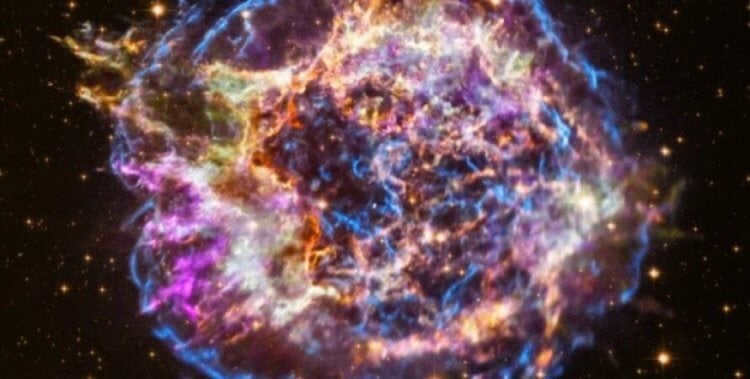
A supermassive explosion known as a supernova releases intense ultraviolet radiation and expels a portion of the star’s outer layer.
The material expelled during a supernova explosion is commonly referred to as a supernova remnant. Soviet scientists in the 1950s, including renowned astrophysicist Joseph Shklovsky, were fascinated by its study. Shklovsky’s primary interest was the potential impact of a nearby supernova on Earth and the solar system.
Astronomers made a groundbreaking discovery of a supernova star that challenged existing knowledge of these celestial events. It underwent two explosions, with a 60-year interval between them.
Consequently, the scientist arrived at a startling conclusion – in the event of a catastrophe taking place tens of light years away, its repercussions would annihilate all life on the planet. This is attributable to the fact that the level of cosmic radiation would skyrocket by thousands of times. Charged particles would induce mutations and even fatality among living organisms.
The scientist also posited a hypothesis that it was the explosion of a supernova that led to the extinction of the entire dinosaur population. Subsequently, German paleontologist Otto Schindewolf subscribed to the same theory. However, he attributed the supernova not to the demise of the dinosaurs, but rather to the Permian extinction that occurred 252 million years ago.
When a star explodes in a supernova event, it releases an immense amount of energy, equivalent to the total energy it has produced throughout its entire lifetime. The intensity of the resulting glow surpasses that of the entire galaxy, which encompasses hundreds of billions of individual stars.
During the 1970s, scientists also made the discovery that nuclear explosions occurring in the atmosphere generate nitrogen oxides that contribute to the depletion of the ozone layer. In 1974, physicist Malvin Ruderman proposed that cosmic rays emitted by supernovae could have a similar effect. Consequently, our planet could potentially experience the loss of its ozone layer for several centuries. This further supported the hypothesis that the extinction of dinosaurs may have been caused by a supernova explosion.
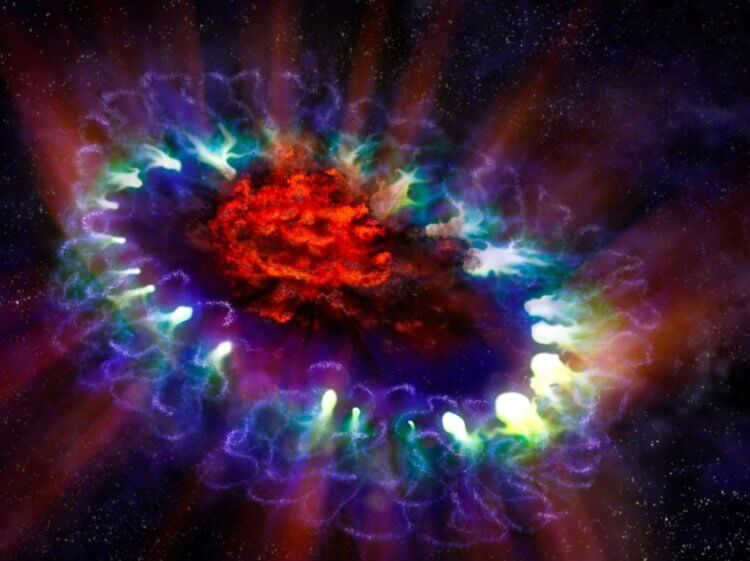
The ozone layer of the Earth’s atmosphere can be destroyed by a supernova explosion that occurs at a distance of several tens of light years from our planet.
For more information, including various hypotheses, scientific findings, and the latest discoveries, please visit our Telegram channel.
What evidence exists for the supernova killer?
For a considerable period, these theories appeared implausible as there was a lack of evidence or refutation, making it impossible to ascertain them during that era. The situation underwent a transformation in the 1980s, courtesy of scientists Alvares father and son. They made a discovery of heightened iridium levels in the Cretaceous strata, precisely at the intersecting points of the Cretaceous and Paleogene periods, coinciding with the mass extinction of dinosaurs.
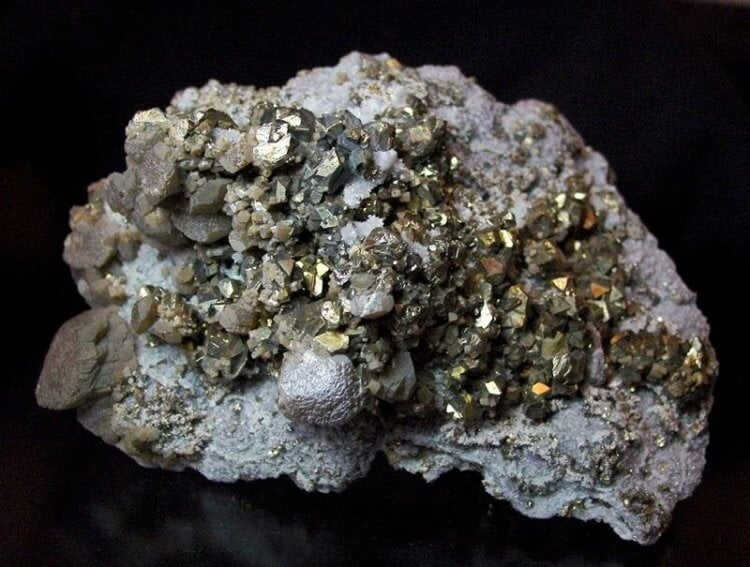
As a consequence of a massive stellar explosion known as a supernova, substantial quantities of the valuable metal iridium are expelled into the vastness of outer space.
All chemical elements that are heavier than lithium are actually synthesized within stars themselves. However, it is only in the cataclysmic events of supernova explosions that elements with masses exceeding that of iron are formed. Remarkably, precious metals such as gold, lead, and uranium can be regarded as the radioactive remnants that are produced as a result of these magnificent supernova explosions.
In the face of what seemed to be an imminent resolution, Luis Alvarez took it upon himself to verify the hypothesis by investigating the heightened presence of plutonium-244, another element that is released during a supernova explosion. Nevertheless, no anomalies were detected during the investigation. Moreover, there were inconsistencies with iridium as well, as the isotopic ratio of 191 and 193 did not deviate from the typical values found within the solar system. Consequently, Shklovsky’s hypothesis had to be discarded.

The extinction of the dinosaurs was not caused by a supernova explosion, but rather by a meteorite impact on Earth.
While the theory of a supernova causing the extinction of the dinosaurs has been dismissed, it is still possible that supernovae have played a role in other mass extinctions on Earth. Alveras’s research has shown that specific radioactive isotopes need to be investigated. These isotopes have been discovered, but not until the 21st century and in the depths of the oceans.
If you are interested in articles about space, black holes, and the origin of the universe, make sure to visit our Zen Channel for more fascinating content.
However, it is premature to dismiss the theory regarding the potential impact of supernovae on the development of life on Earth. In 2020, a group of American scientists proposed a new hypothesis suggesting that a supernova explosion was responsible for the extinction event at the end of the Devonian period approximately 359 million years ago. This event led to a decrease in ozone levels in the atmosphere and the presence of isotopes such as samarium-146 and plutonium-244, which are characteristic of supernovae. The authors suggest that the explosion occurred approximately 60-70 light years away from our solar system.
Are supernovae a danger to Earth?
Supernovae occur in our galaxy approximately once every 100 years. However, explosions that pose a threat to Earth occur much less frequently, happening only about once every 1 billion years. We previously reported that the nearest supernova to us is on the verge of exploding, but it is located at a distance of 642.5 light years. Scientists have not yet identified any dangerous stars near our solar system. However, is it possible that scientists might be mistaken and overlook a real threat to humanity? Let’s discuss this news in our Telegram chat.
Nicholas Tchaikovsky Enlightened (35189) Regarding the collision of neutron stars, that’s not just my opinion, it’s what astrophysicists are saying.
Yes, it also forms there.
However, they don’t claim that it exclusively forms there.
When it comes to the intense neutron fluxes that occur in supernova explosions, the formation of any heavy elements is inevitable. However, determining the exact fraction that comes from supernovae versus neutron stars requires numerical modeling, and there is no consensus on this matter.
Supernova remnants refer to the gas and dust formations that emerge following the catastrophic explosion of a star several decades or centuries ago, resulting in its transformation into a supernova.
Astronomers place great importance on studying supernova remnants because they play a crucial role in the evolution of galaxies. These remnants disperse heavy elements from the supernova explosion into the interstellar medium, thereby heating it. It is also believed that these objects are responsible for accelerating galactic cosmic rays.
W49B is situated within a range of 26 thousand to 36.8 thousand light years away from our planet in the Milky Way, making it the most luminous entity of its kind in our Galaxy. A recent investigation conducted by astronomers involved tracking the celestial body and ascertaining its elemental makeup.
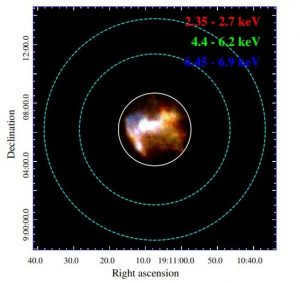
A recent investigation uncovered the presence of excessive ionization in the iron, as well as lighter elements like silicon, sodium, and calcium, within the hot plasma of W49B. This plasma possesses a mass equivalent to about 4.6 solar masses, and its temperature varies depending on its distance from the center.
In the past, astronomers made a groundbreaking discovery regarding an unusually faint supernova. The absolute stellar magnitude of 2019gsc reached a peak at -13.8, setting a new record for objects of its kind.
Several decades later, it was revealed that the previously identified new stars in the constellations of the Northern Crown and Swan are actually binary systems. This concept was independently proposed by French astrophysicist Edward Schatzmann and Czech astrophysicist Zdenek Kopal, suggesting that all new stars are actually double systems.
Based on contemporary theories, substance is expelled from the exterior of one star, progressively amasses on the exterior of another star – presumably a white dwarf with its expansive and compact atmosphere, where circumstances are conducive for swift ignition of hydrogen. Circumstances for atomic fusion reactions are established and a detonation transpires. The outer layer is shed, and the system reverts to its previous condition. However, the adjacent star persists in shedding substance, and the cycle repeats. The greater the accumulation of hydrogen in the atmosphere of a white dwarf, the more formidable the outburst becomes.
However, there are stars that seem to be similar to new stars, except that there is nothing left of them after the flash! Instead of returning to their original state, these stars vanish and are replaced by a rapidly expanding nebula. If such stars erupt in close proximity to the Solar System (within a distance of a thousand light years, which can be considered relatively close), they can be visible at their maximum brightness even during the day. While new stars appear frequently, supernovae – the term used to describe these events – occur in the Galaxy approximately once every century. Most of the time, they go unnoticed because the explosion happens far away, obscured by dense gas and dust clouds that absorb light.
The Large Magellanic Cloud witnessed the spectacular event of Supernova SN 1987a. In the photograph, the star can be seen on the left before its outburst, indicated by an arrow. On the right side, the supernova outburst is captured in all its glory. The photo was taken by David Malin of the Australian Astronomical Observatory.
The Crab Nebula is the remnant of a supernova outbreak that occurred in 1054. This stunning illustration of the nebula was created by NASA, ESA, J. Hester, A. Loll (ASU).
A bright spot known as Supernova 2006gy can be seen in the galaxy NGC 1260. The photograph, taken in the infrared, also captures the dim region below and to the left, which is the galactic nucleus. The image was captured by Lick, UC Berkeley, J. Bloom, and C. Hansen.
The same galaxy is shown in X-rays, where the luminosity of the nucleus and supernova are almost identical. This X-ray photo was taken by NASA, CXC, UC Berkeley, and N. Smith.
Contrarily, supernovae spectra displayed absence of lines entirely. Rather, they exhibited expansive carbon and oxygen bands (with hydrogen being absent!) that were shifted towards the blue end of the spectrum by an amount corresponding to the immense velocity of motion: up to 10-20 thousand kilometers/s.
The spectra of the 12 supernovae that were studied exhibited remarkable similarity. Additionally, the light curves displayed a similar pattern. This led to the initial conclusion that supernovae are a homogeneous group of celestial objects. However, this hasty conclusion was challenged in 1940 by Rudolf Minkowski, a German-American astrophysicist. He obtained the spectrum of a supernova that differed from all previous ones, forcing him to recognize the existence of at least two types of supernova eruptions. The first type, known as Type I supernovae (SN I), displays bright bands in its spectrum, while the second type, known as Type II supernovae (SN II), lacks these bands. Surprisingly, it was found that Type II supernovae occur with a frequency comparable to that of Type I supernovae. The fact that only one Type II supernova was observed compared to the discovery of 12 Type I supernovae over several years of observation can be attributed to a random occurrence.
Why do type I supernovae exhibit such a consistent behavior? It turns out that this is due to the fact that they originate from objects with similar physical properties. However, this might seem puzzling considering that stars vary greatly in terms of mass, temperature, and luminosity. Nevertheless, amidst this stellar diversity, we have discovered objects with identical characteristics – white dwarfs. These stars, which can have different masses depending on the mass of their progenitor stars, share a crucial property: according to the calculations of Subramanian Chandrasekhar, an American astrophysicist, the mass of a white dwarf cannot exceed 1.4 times that of the Sun. If, for some reason, a white dwarf’s mass surpasses this threshold, known as the Chandrasekhar limit, the star becomes unstable. The pressure within its core can no longer counteract the force of gravity, resulting in a tremendous release of energy and the occurrence of a supernova. We are specifically referring to the collapse of white dwarfs with the same mass, which leads to a release of energy of approximately the same magnitude and the formation of collapsed shells with identical chemical compositions.
The remaining fragment of Kepler’s supernova (SN 1604). Illustration: Courtesy NASA / JPL-caltech
The concept of classifying supernovae into two categories persisted among scientists for many years, although it gradually became evident that the situation is more complex than initially thought. Presently, even type I supernovae are not a completely homogeneous group, contrary to what was believed fifty years ago. It has become necessary to further categorize them into subgroups: SN Ia, SN Ib, SN Ic.
A supernova is not simply a star, but rather a celestial event, marking the end of a star’s life cycle. During this extraordinary process, an ordinary star undergoes a remarkable transformation, giving rise to either a neutron star or, in some cases, a black hole. Type II supernovae occur in massive stars that originally had a mass greater than 8 times that of our sun. As these stars evolve, they gradually shed their outer layers, leaving behind a dense core that is held together by internal pressure. The more massive the star, the more substantial its core becomes. In stars with a mass exceeding 8 solar masses, the core mass surpasses the Chandrasekhar limit, preventing the formation of a white dwarf. Instead, when such a core explodes, it gives birth to a neutron star, which is able to resist further collapse due to the pressure exerted by degenerate neutron gas. However, there is a limit to the mass a neutron star can attain. If its mass exceeds 2-3 solar masses (the precise value of this limit remains unknown), even the pressure of degenerate neutron gas cannot prevent the collapse, resulting in the formation of a black hole. This phenomenon occurs in stars with initial masses greater than 10-20 solar masses.
Incidentally, a black hole, much like a supernova, is not a conventional star (albeit undetectable, as even light is unable to escape it). A black hole is an unstoppable phenomenon where matter continuously collapses into a singularity at its center. This process, which lasts mere seconds for an observer falling alongside the matter, appears infinite in duration to an external observer – such as you and me.
Therefore, a white dwarf transforms into a supernova when its mass surpasses the Chandrasekar limit. But what causes the mass of a white dwarf to increase? There are two potential explanations.
Imagine a scenario where there exists a binary system consisting of two relatively small stars. As these stars evolve and shed their outer layers, they transform into white dwarfs. This binary system consists of two white dwarfs with a combined mass similar to that of our sun. If these white dwarfs orbit in close proximity to each other, they will gradually spiral inward over time. Eventually, they will collide with one another. When this collision occurs, the resulting object will have a mass greater than the Chandrasekar limit, leading to the formation of a neutron star. This collision will also trigger a Type I supernova explosion, as the white dwarfs involved have a specific chemical composition associated with this type of stellar phenomenon.
The explosion of a massive star creates a shock wave. Illustration: NASA
Second. Envision a binary system in which one star has shed its shell and transformed into a white dwarf, while the other star is still in the process of evolving but has already started to shed its shell. The material from the shell flows towards the white dwarf, creating a disk, and then falls onto the surface of the star, thereby increasing its mass. Eventually, the mass of the white dwarf surpasses the Chandrasekhar limit, leading to a Type I supernova explosion.
In the initial scenario, two white dwarfs of varying masses combine, resulting in neutron stars with different masses as well. Despite both belonging to type I, the supernova explosions differ from one another. Conversely, in the alternative scenario, a white dwarf with a mass precisely equivalent to 1.4 solar masses detonates. Consequently, the explosions in this scenario display greater uniformity. These explosions likely account for the occurrences of type Ia supernova outbreaks.
In ancient times, it was believed that everything beyond the Earth and Moon was everlasting and unalterable. Nevertheless, contemporary science has enabled us to debunk this assumption. Presently, we are aware that even the universe possesses a limited lifespan and stars, similar to humans, are both born and perish. Concurrently, the most immense and dazzling stars, as they approach their demise, detonate with such intensity that their brilliance can outshine an entire galaxy.
History
Since ancient times, there have been observations of exploding stars, dating back to the dawn of time. These objects were often observed in previously empty areas of the night sky, leading to the belief that they were newly formed stars. They were referred to as “new stars”.
In reality, these stars had existed in those locations prior to their explosions, but they were not visible to the naked eye. It was only after the explosion that their brightness increased significantly, making them visible in the night sky.
These observations of similar phenomena in medieval Europe played a crucial role in disproving the concept of an unchanging cosmos.
The process
What is the reason behind the explosion of some stars while most do not? The answer to this query can be found in a crucial factor of a star – its mass. In essence, it is the mass that dictates the star’s lifespan, activity level, energy emissions, and ultimately its demise.
A star consists of approximately 75% hydrogen, 25% helium, and a small fraction of heavier elements. The substantial mass of the star generates a powerful gravitational force within its core. Consequently, the lighter atomic nuclei combine to form heavier ones, giving rise to immense amounts of heat and light energy. The more massive the star, the greater the capacity for synthesizing heavier elements, including iron.
The core of a star accumulates the heavier elements, like iron and silicon, while the outer shell consists mainly of the lightest elements, hydrogen and helium. Through thermonuclear reactions, the light elements decrease in abundance while the heavy elements increase, causing the core to become denser and more massive.
However, the iron core will not cease its expansion. This results in the electrons losing their ability to counteract gravity. The immense gravitational force begins to compress the electrons into protons, resulting in the rapid formation of a massive neutron core. Once the electrons have transformed into neutrons within the protons, they are no longer capable of opposing the force of gravity.
Right after that, the star’s collapse commences – that is, the star starts collapsing inward, towards its neutron core. Because the neutron core is unable to withstand such an immense mass, and the gravitational energy needs a place to go, an immensely powerful explosion occurs. The matter of the star begins to rapidly explode, reaching speeds of over 10% of the speed of light. This phenomenon is known as a supernova explosion. A supernova explosion releases an amount of energy equivalent to what our Sun will emit throughout its entire lifespan, and the light emitted from such an explosion can surpass the luminosity of an entire galaxy.
It is during the occurrence of a supernova explosion that results in the formation of virtually all known heavy elements in the Universe: uranium, thorium, and other transuranic elements. Following a supernova explosion, there will either be a neutron star – an object with the dimensions of a city and a density surpassing that of an atomic nucleus; or a black hole – an entity with gravity so immense that even light cannot escape its gravitational pull.
Furthermore, in addition to heavy elements, when a supernova detonates, the components that constituted the star are dispersed throughout the Universe, subsequently serving as the building blocks for new star systems and their planets. Many of the atoms present in our bodies are the byproduct of supernova explosions.
The Sun
As mentioned previously, the primary characteristic of a star is its mass. The Sun is classified as a yellow dwarf. Based on calculations, stars that conclude their life cycle with a supernova explosion range in mass from 9 to 20 times that of the Sun.
Conversely, our star, as it nears the end of its existence, will first expand significantly in size, transforming into a red giant, and then gradually shed its outer layer, ultimately leaving behind only a white dwarf.
Currently, the Sun is in the middle stage of its life, and we still have at least one billion years before its energy output becomes so intense that liquid water can no longer exist on planets.
A supernova, also known as a supernova explosion, occurs when a massive star reaches the end of its life and undergoes a catastrophic explosion. This event releases an immense amount of energy and causes the star’s luminosity to increase billions of times. The outer layers of the star are expelled into space, creating a nebula, while the core undergoes compression and can transform into either a neutron star or a black hole.
Supernovae are the driving force behind the chemical evolution of the universe. These powerful explosions propel heavy elements, which were formed through thermonuclear reactions during a star’s lifetime, into space. From these remnants, protostars with planetary nebulae are born, eventually giving rise to stars with planets.
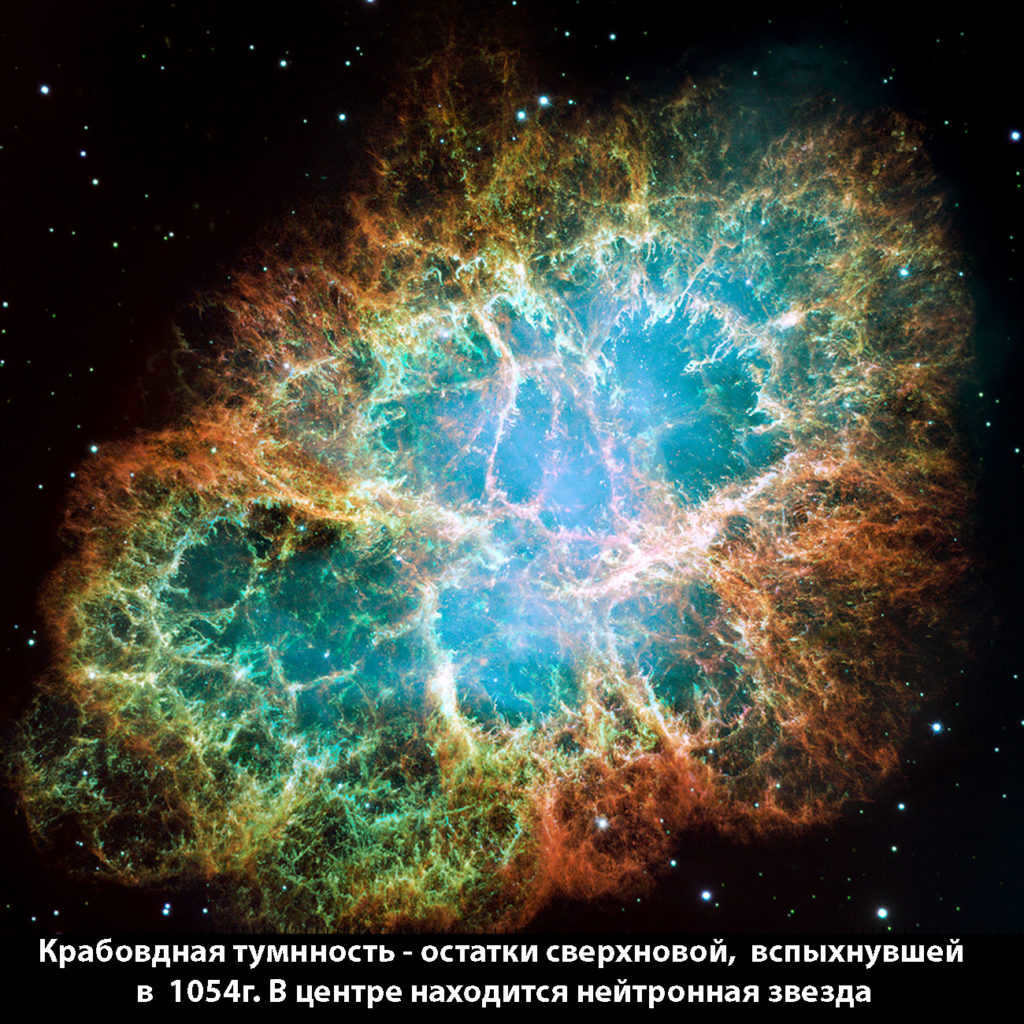
Just like the Earth came into existence, all the substance that envelops us and makes up our being, came from the depths of celestial bodies, even prior to the birth of the Sun.
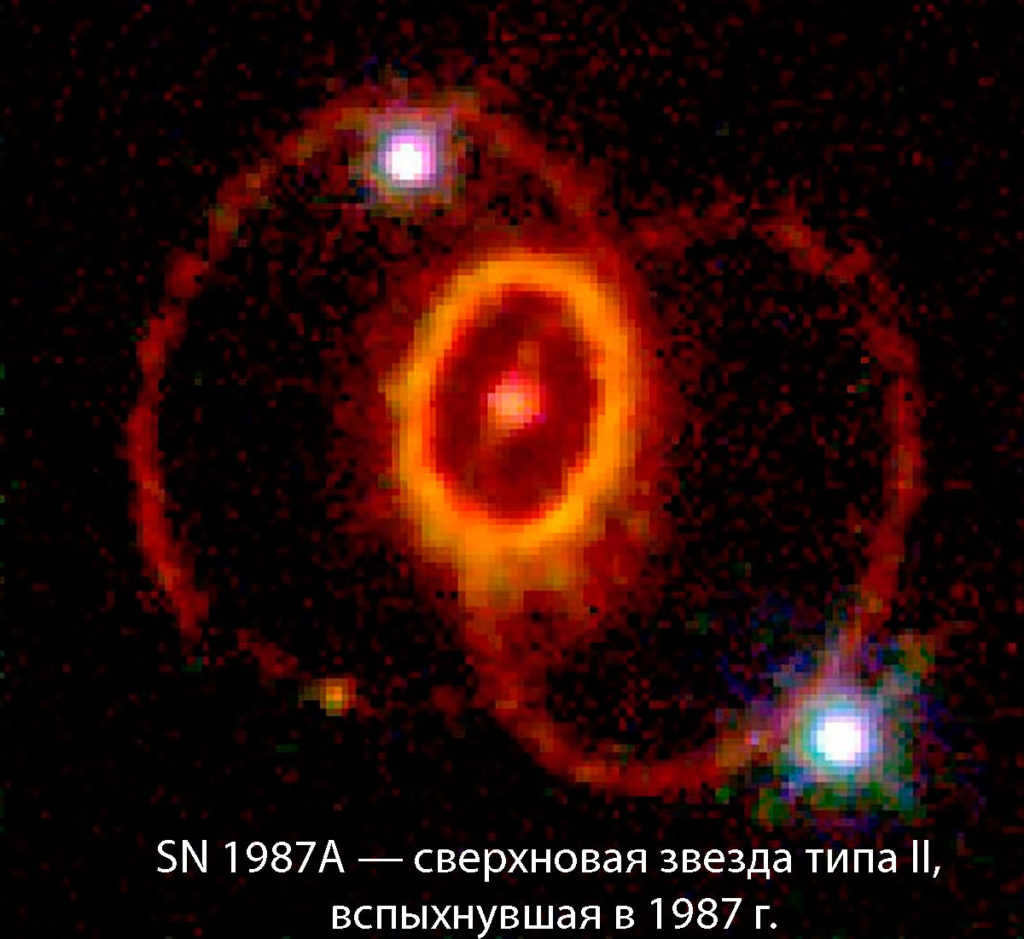
A supernova is easily detectable – the brightness of the explosion surpasses that of all the other stars in the galaxy.
The process of the explosion
As you are aware, a star emits tremendous energy as a result of the thermonuclear reaction occurring within its core. The thermonuclear reaction entails the conversion of hydrogen into helium and heavier elements, accompanied by the release of energy. However, when the hydrogen in the star’s interior is depleted, the outer layers of the star start to collapse towards the core. Once the critical point is reached, the matter violently detonates, further compressing the core and ejecting the outer layers of the star in the form of a shockwave.
So much energy is generated in a relatively small space that a portion of it must be carried away by neutrinos, which possess minimal mass.
Ia Supernova Classification
These supernovae do not originate from stars; rather, they are formed from white dwarfs. One intriguing characteristic is that all of these objects exhibit the same luminosity. By knowing the luminosity and type of object, it is possible to calculate the object’s velocity based on its redshift. The search for Ia supernovae is of great significance, as they have played a pivotal role in the discovery and validation of the accelerating expansion of the universe.
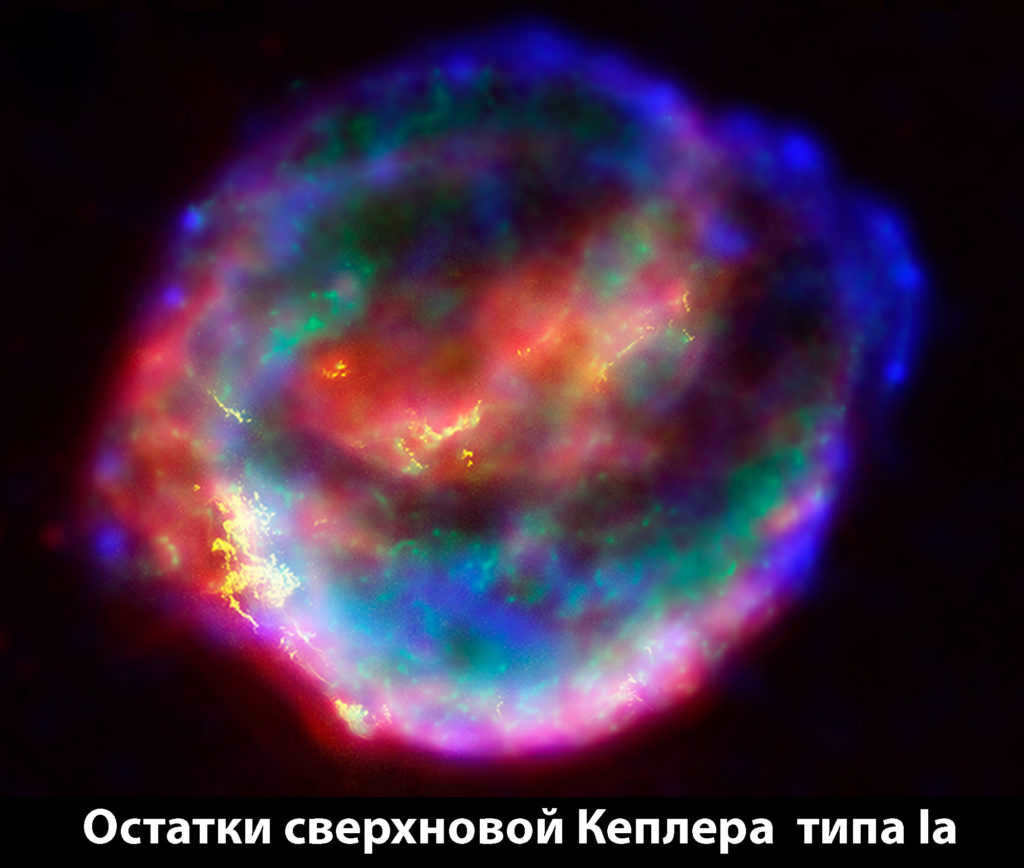
Possibly, the eruption could happen tomorrow
There is a comprehensive list comprising of potential supernova star candidates. Naturally, it is challenging to precisely determine the exact timing of the explosion. Here are some of the closest ones known:
- IKPegasus. Situated in the Pegasus constellation, this binary star system is within a range of 150 light-years from our location. Its companion is a massive white dwarf that has already ceased energy production through fusion. As the main star transforms into a red giant and expands its radius, the dwarf will start accumulating mass at its expense. Once its mass reaches 1.44 solar masses, a supernova explosion could occur.
- Antares. A red supergiant located in the Scorpius constellation, approximately 600 light years away. Antares is accompanied by a hot blue star.
- Betelgeuse. Another object similar to Antares can be found in the Orion constellation. Its distance from the Sun is estimated to be between 495 and 640 light years. Betelgeuse is a relatively young star, around 10 million years old, and it is believed to be approaching its carbon burnout phase. It is expected that within the next one or two millennia, we will have the opportunity to witness the spectacular explosion of a supernova.
Impact on Earth
An explosion of a nearby supernova star would undoubtedly have consequences for our planet. For instance, the explosion of Betelgeuse would cause its brightness to increase by approximately 10,000 times. This means that for several months, the star would appear as a radiant point, shining as brightly as the full Moon. However, if either pole of Betelgeuse were to face the Earth, our planet would be bombarded with a stream of gamma rays emitted by the star. This would result in an intensification of the aurora borealis and a depletion of the ozone layer, potentially having a highly detrimental impact on life on Earth. These are purely theoretical calculations, and it is impossible to predict with certainty the exact effects of the explosion of this supergiant star.
The demise of a celestial body, much like existence itself, can occasionally be quite stunning. And supernovae exemplify this fact. Their explosions are both intense and radiant, surpassing the brilliance of all neighboring stars.
5000 years ago, a luminous disk, shining as brightly as the sun, illuminated the sky. In response, the inhabitants of the city hurried to the temples in a state of panic. The priests prophesied calamity and divine retribution that would befall sinners unless they offered generous sacrifices, prompting the worshipers to beseech protection from misfortune. The unsuspecting townsfolk flocked to the temple bearing valuable offerings, hoping that this would avert the impending disaster. The priests prayed fervently and the benevolent God averted the misfortune. Gradually, the second sun began to fade and, a year later, it vanished completely from the celestial realm. By deciphering cuneiform tablets from the ancient Sumerian civilization, scientists have been able to extract information about this second sun.
However, the ancient observers, while witnessing the dazzling radiance, could not even fathom that the luminous burst in the firmament is not the emergence of a novel celestial body, but rather the demise of an antiquated one, wherein the cessation of thermonuclear reactions and the gravitational forces exerted by the entity itself culminate in a colossal detonation, visible across a span of tens of light years. This event, within close proximity, is an absolute catastrophe, unleashing death within a radius of 50 light years. The magnitude of the explosion amounts to a staggering 1,046 joules, while the temperature of supernovae soars to an astounding 100 billion degrees!
Distinguishing a Nova from a Supernova
In ancient times, observers were unaware that a luminous celestial object in the sky could be the result of various processes. Due to a sense of reverence and the absence of specialized equipment, they were unable to discern the distinction. It was not until the invention of telescopes that these disparities were revealed. It was discovered that what we refer to as a nova or supernova is not the actual star, but rather its explosive event.
Despite the similarities in their names, the mechanisms behind these astronomical phenomena are actually quite distinct.
The brilliant burst of a supernova star
Throughout the existence of a blazing celestial body, there exists an unyielding conflict between opposing forces. The massive star is relentlessly compressed by the gravitational pull towards its core, attempting to transform the colossal fiery sphere into a mere soccer ball. Meanwhile, thermonuclear reactions rage within the depths of the stellar mass and on its surface, endeavoring to fragment the luminous entity into minuscule fragments.
Within the core of a youthful star, the reserves of hydrogen are vast, and the ongoing reactions that transform hydrogen atoms into helium maintain a delicate balance between the forces of gravity and thermonuclear reactions.
However, like all things, nothing remains unchanged forever. After a span of a few billion years or so, the hydrogen reserves are exhausted and the previously active star begins to age. The core transforms into a compact mass of scorching hot helium, while the remaining hydrogen burns away at the periphery. In its final throes, the last remnants of hydrogen are consumed, leaving the celestial luminary powerless against its own gravitational force.
Consequently, the star undergoes a drastic reduction in size, shrinking hundreds of thousands of times over. Simultaneously, the majority of its stellar energy is unleashed. The dying star’s last gasp manifests as a brilliant explosion, known to astronomers and observers as the birth of a supernova, which is meticulously documented in chronicles and treatises.
An immense burst of energy surpasses the brilliance of an entire galaxy, and the dense materials are propelled through the vast expanse of interstellar space by the cosmic breeze. In distant star systems, hundreds of light-years removed from the location of this cosmic catastrophe, novel celestial bodies materialize from the remnants of the deceased star.
Depending on the classification of the expired star, two outcomes can occur:
During a supernova explosion, the star meets its permanent demise and transforms into either a black hole or a neutron star.

The occurrence of a new celestial body exploding – The display is equally spectacular (as the brightness of an ordinary celestial object increases from 50,000 to 100,000 times), but more frequent. Typically, this happens within a binary star system, where one star is much older and is either on the main sequence or has transitioned into the red giant phase and has already filled its Roche lobe, and the second star is a white dwarf. As a result of close interaction, gas containing up to 90% hydrogen flows from the giant neighbor to the white dwarf through the vicinity of the L1 Lagrangian point.
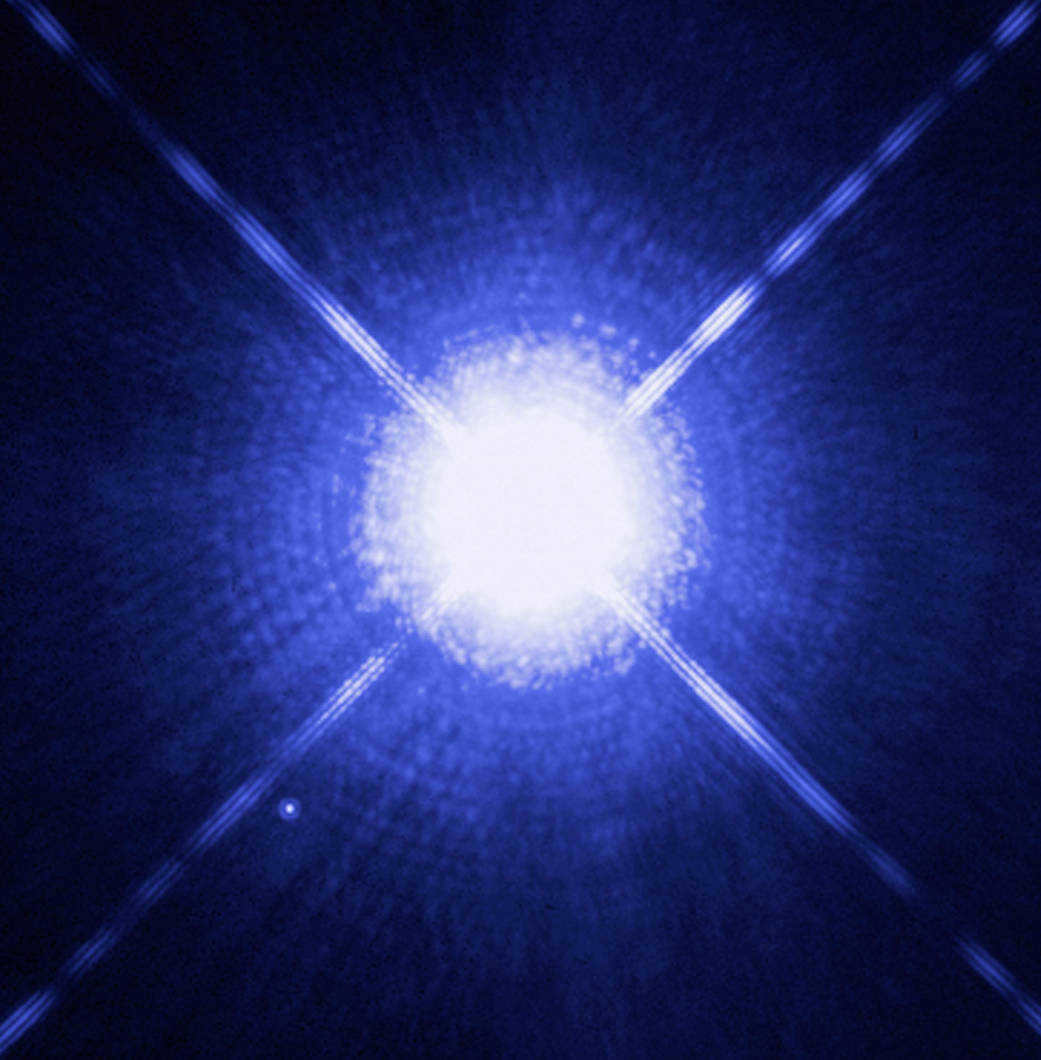
The matter acquired by the dwarf forms a disk of accretion around the smaller star. The accretion rate on the white dwarf remains constant, and by knowing the parameters of the companion star and the mass ratio of the double system’s component stars, this value can be calculated.
However, greed has never led anyone to good, and when hydrogen around the white dwarf becomes excessive, an explosion of incredible force occurs. Moreover, if the mass of the white dwarf reaches 1.4 times that of the sun, an irreversible supernova explosion takes place.
In summary, a new star is created through a thermonuclear explosion that occurs on the surface of a compact and dense small star. On the other hand, a supernova explosion causes the core of a massive star, which is many times more massive than the Sun, to collapse and completely annihilate the surrounding layers.
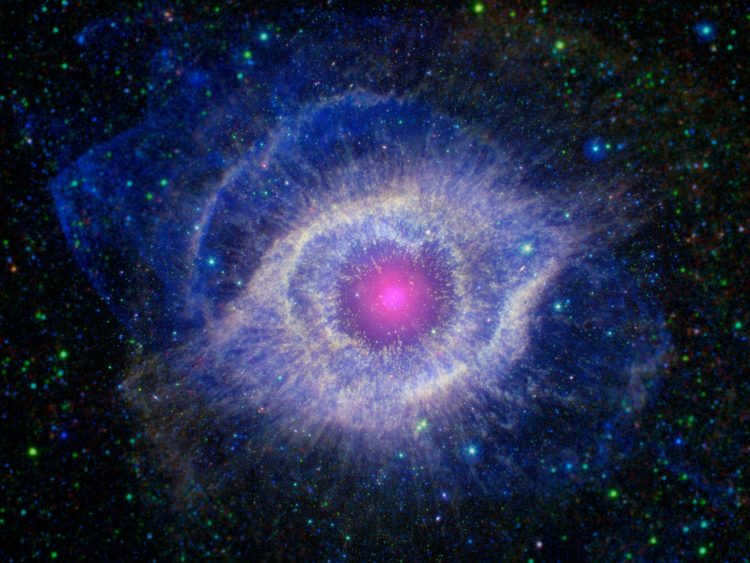
- Stars
Stars rarely perish without leaving a trace; there is always a relic, but the nature of the remnant is determined by its size and mass: black holes, pulsars, white dwarfs, neutron stars. The demise of stars is both destructive and creative.
A star itself serves as a crucible for chemical elements. Everything that surrounds us, everything we perceive and even what we don’t see, was forged by stars. Not the objects themselves, of course, but the atoms they consist of. Even we, as human beings, are descendants of stars. The very materials that make up our bodies were produced by some ancient and distant star during its magnificent death. It is highly likely that the atoms in your left and right hands were created by different stars.
Each star in the cosmos serves as an immense nuclear furnace, converting one element into another. This was the coveted aspiration of ancient alchemists, akin to the legendary philosopher’s stone. In their early stages, stars derive their energy by fusing two hydrogen atoms to form helium, thereby unleashing vast quantities of energy.
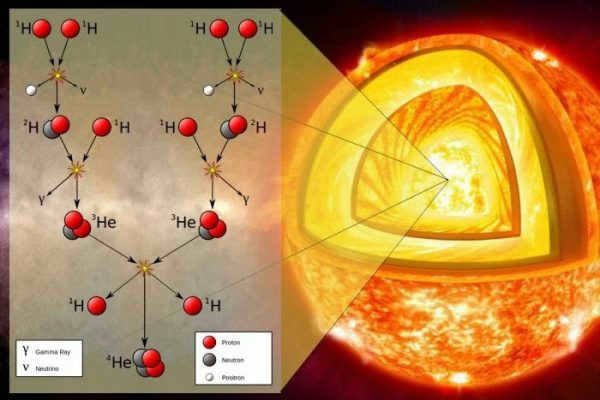
The process of thermonuclear fusion occurs within stars.
Once the hydrogen supply is exhausted, the star begins to produce carbon, followed by oxygen and other elements until it reaches iron.
The production of iron signifies that the star is nearing the end of its life. At this point, the star is unable to generate any elements heavier than iron. Iron absorbs all of the star’s nuclear fusion energy, causing it to deplete its fuel and ultimately approach its demise. Consequently, a star similar to our sun (a medium-sized star) can no longer maintain its outer layers, causing them to shed and move away from the core, resulting in the expansion of the star and its transformation into a red giant.
The concluding phases of stellar development
The life cycle of stars is contingent upon their mass. Massive stars undergo more vigorous fuel consumption and deplete their energy reserves within a few tens of millions of years. On the other hand, smaller stars can sustain a gradual depletion of their fuel for hundreds of billions of years. Consequently, the process of stellar demise varies depending on the star’s mass. The illustration below provides instances of the progression of stars with different masses.
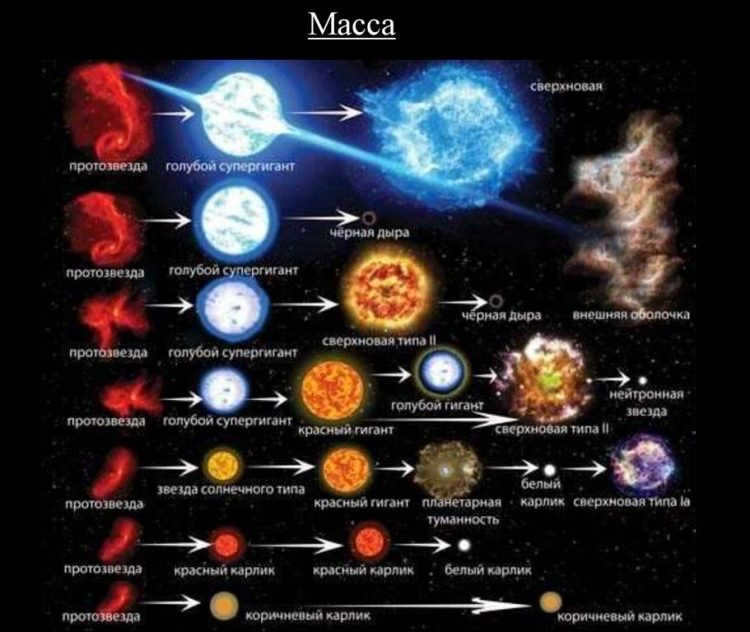
Let’s examine in more detail the enigmatic phenomena that transpire when different stars reach the culmination of their life cycle.
Massive celestial bodies
When a star surpassing five times the mass of the Sun progresses into the red supergiant phase, its core initiates a process of gravitational shrinkage. This contraction leads to heightened temperature and density, subsequently triggering a fresh series of thermonuclear reactions.
Consequently, the most colossal and massive stars are consumed rapidly and ultimately explode, resulting in supernovae.
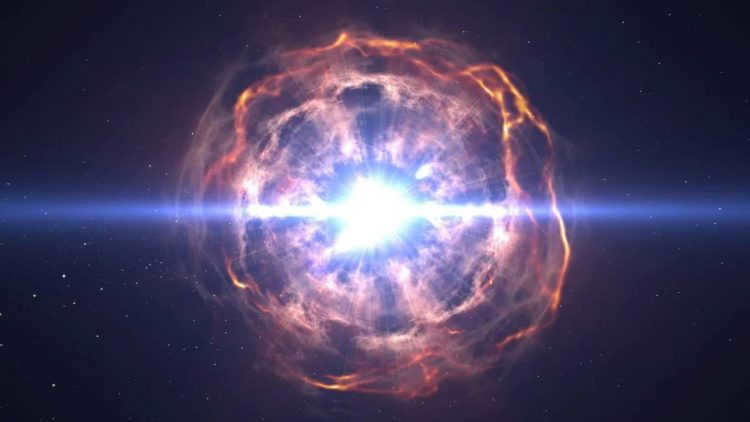
A supernova explosion releases 100 times more energy than the Sun emits during its entire lifetime. The explosion leaves behind a neutron star or black hole, and the ejected matter from the explosion becomes the building material for new stars.
One of our closest stellar neighbors, Betelgeuse, may face such a fate, but it is uncertain when it will explode.
The processes involved in the formation of supernovas are still under study, and there is currently no clear understanding of what remains of the original star.
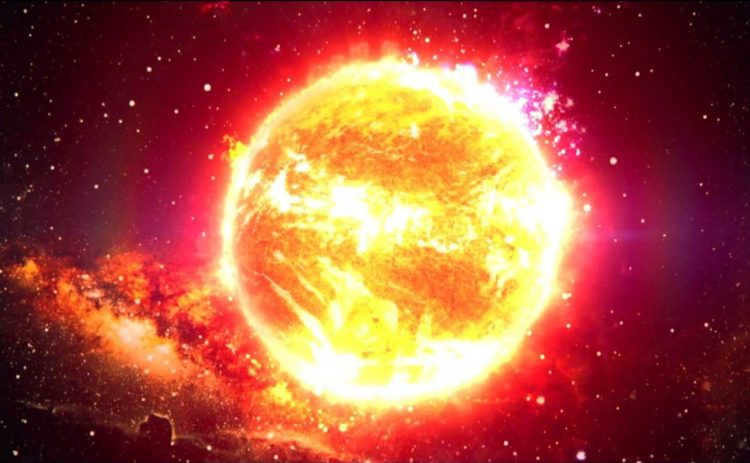
Betelgeuse is getting ready to go boom
Currently, there are four potential outcomes for this supermassive star:
- Supernovae with low mass result in the formation of a neutron star and gas.
- Supernovae with higher mass lead to the creation of a black hole and gas.
- Massive stars that undergo direct collapse produce a massive black hole without any other remnants.
- Following a hypernova explosion, only gas remains.
However, the most commonly considered options are neutron stars and black holes.
Neutron stars
Neutron stars, also known as collapsed stars, are incredibly dense celestial objects that form after a massive star goes supernova. These stars are so dense that a teaspoon of neutron star material would weigh about a billion tons on Earth. Neutron stars are mainly composed of neutrons, which are subatomic particles with no electrical charge. The extreme density of neutron stars causes their gravity to be incredibly strong, making them a fascinating object of study for astronomers.
Neutron stars are formed when a massive star runs out of nuclear fuel and undergoes a supernova explosion. During this explosion, the outer layers of the star are blasted away, leaving behind a core composed mainly of neutrons. The gravity of this core is so strong that it causes the remaining matter to collapse inward, creating a neutron star.
One of the most intriguing aspects of neutron stars is their incredibly high density. The matter inside a neutron star is packed so tightly that it is believed to be denser than an atomic nucleus. To put this into perspective, if you were to take a teaspoon of neutron star material and bring it to Earth, it would weigh about a billion tons.
The extreme density of neutron stars also gives them a very strong gravitational pull. In fact, neutron stars have some of the strongest gravitational fields in the universe. This makes them an ideal object of study for astronomers who want to test our understanding of gravity and the behavior of matter under extreme conditions.
Another fascinating feature of neutron stars is their rotation. Neutron stars can rotate incredibly fast, with some spinning hundreds of times per second. This rapid rotation is a result of the conservation of angular momentum during the collapse of the star. As the star collapses, its rotation speed increases, leading to a rapid spin once it becomes a neutron star.
In addition to their high density and rapid rotation, neutron stars also emit beams of electromagnetic radiation from their magnetic poles. These beams can be observed as pulsating signals on Earth, giving neutron stars their name as pulsars. The regular pulsations of these beams are believed to be caused by the rotation of the neutron star, with the beams sweeping across space like a lighthouse.
Overall, neutron stars are fascinating objects that provide valuable insights into the nature of matter, gravity, and the behavior of extreme celestial objects. Their high density, strong gravitational pull, rapid rotation, and pulsating signals make them a subject of great interest for astronomers and physicists alike.
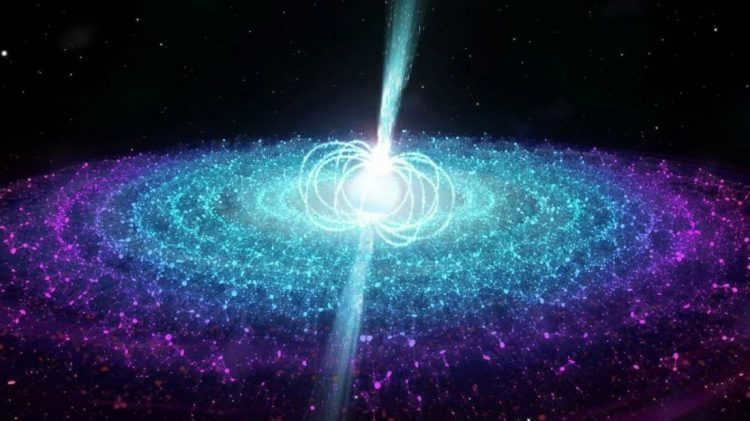
The compression caused by gravity continues until the nuclear forces intervene, resulting in the creation of a unique celestial object known as a neutron star, or more specifically, a pulsar.
A neutron star is an awe-inspiring natural phenomenon. It is formed when the core of a star that has undergone a supernova explosion is compressed to an incredibly dense state. Imagine the compression of gas in an internal combustion engine, but on a much larger and more efficient scale. The once vast ball of stellar material, hundreds of thousands of kilometers in diameter, is condensed into a compact sphere only 10 to 20 kilometers across. The compression is so intense that electrons merge with atomic nuclei, giving rise to neutrons, hence the name “neutron star”. On its surface, a neutron star exhibits incredibly powerful magnetic fields and an immense gravitational pull.
As for what will remain in the place of a cooled neutron star, it is hard to say. Unfortunately, due to the relative youth of our universe, we are unable to observe this phenomenon directly.
Dark holes
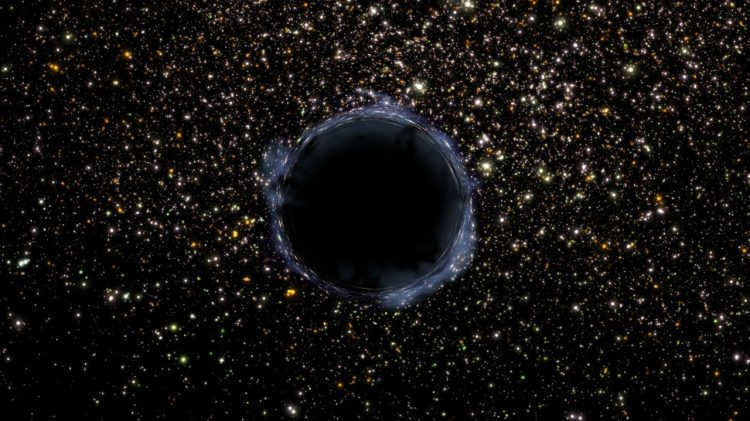
In the event that the star’s mass exceeds that of the Sun by more than 30 times, the aftermath of its explosion as a supernova results in the continuation of gravitational collapse, ultimately resulting in the formation of a black hole. It possesses the same density as the Earth would if it was compressed down to a diameter of 5 centimeters. Consequently, the gravitational force exerted by black holes approaches infinity. This immense gravitational force cannot be surpassed, not even by particles of light with their restricted velocities. As a result, a black hole does not reflect any light that falls upon it; instead, it absorbs it. It is from this characteristic that the name black hole originates.
Scientists hypothesize that the laws of physics cease to function within black holes, causing space and time to disappear. However, information is believed to remain in the form of holographic projections. The event horizon, which marks the boundary of time and space, surrounds the black hole. At the center lies the singularity, a state of physical uncertainty. Black holes consume stars and nebulae until they reach their capacity, at which point they expel a large stream of gas. This gas can manifest as a quasar, which exists beyond the confines of the galaxy.
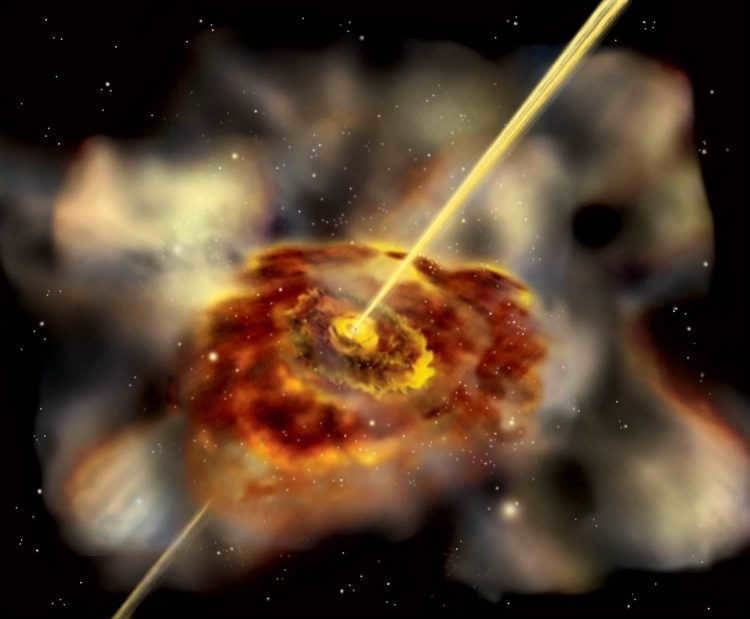
The size of a quasar exceeds the size of the solar system. New stars and galaxies start forming beyond the boundaries of the galaxy.
Stars of medium size
Other stars, which are less massive (ranging from 0.4 to 3.4 solar masses), remain on the main sequence for a longer period compared to the larger stars. However, once they leave the main sequence, they die much faster than their neutron counterparts.
A star, similar to the Sun, which is a medium-sized star, towards the end of its life cannot retain its outer layers anymore. These layers start to shed and move away from the core, causing the Sun to expand and become a red giant. Changes in the amount of emitted energy lead to periods of instability, resulting in fluctuations in size, surface temperature, and energy release for the star.
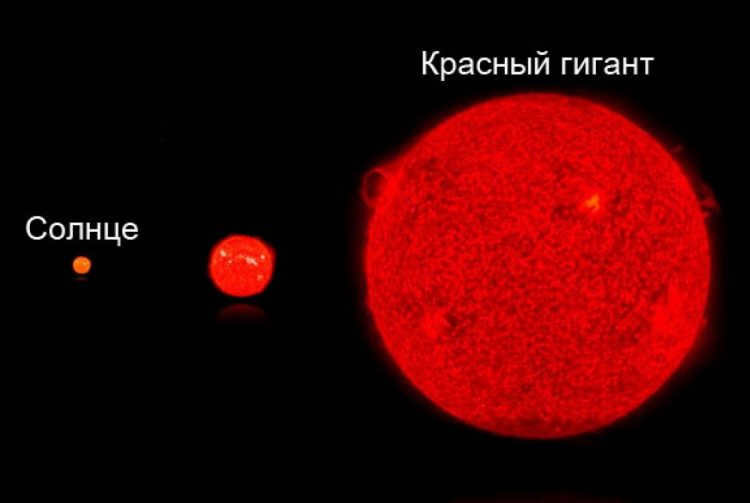
However, gravity works in the opposite direction, causing the core to compress and increase in density. As a result, the star expands and becomes incredibly large.
Before its demise, our Sun will engulf Mercury, Venus, and eventually Earth. The sight of a sunrise in the last million years will be awe-inspiring. The Sun will dominate the entire horizon, scorching everything in its path.
The ultimate fate of the star’s core is determined by its initial mass. It can either become:
- a white dwarf (in the case of low-mass stars);
- a neutron star (pulsar), if the star’s mass exceeds 1.38 – 1.44 solar masses during its late stages of evolution;
- When there is no more fuel available for iron production, the star will undergo a process in which its outer layers are completely shed, effectively dispersing elements throughout the universe.
- As a result, the core of the star will contract into a lifeless and highly compact object known as a white dwarf, which is approximately the size of the Earth.
- This newly formed object will possess an extraordinary density that is millions of times greater than its original state.
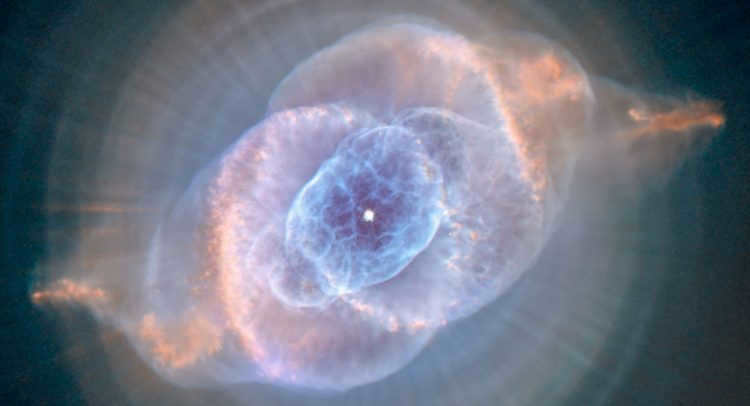
A white dwarf within the Cat’s Eye Nebula.
Most stars, including our Sun, will eventually reach their end, while the white dwarf will persist for billions of years, compelling planets to revolve around the inert remains.
White dwarfs currently account for 3 to 10% of the total number of stars in the Universe. These white dwarfs have a very high temperature, exceeding 20,000 K, which is more than three times the surface temperature of the Sun. However, their temperature is still lower than that of neutron stars. Due to their lower temperature and larger surface area, white dwarfs cool down at a faster rate, taking approximately 10^14 to 10^15 years. As a result, a new celestial object, known as a black dwarf, will emerge in the Universe in the next 10 trillion years. This black dwarf will be formed through the cooling process of a white dwarf.
Currently, there are no black dwarfs present in the cosmos. Even the oldest cooling stars have only lost a maximum of 0.2% of their energy, causing their temperature to decrease to 19,960 K in the case of a white dwarf with an initial temperature of 20,000 K.
Stars with low mass
Currently, there is limited knowledge about the fate of small stars once they have exhausted their hydrogen supply in their core. Since the age of the Universe is 13.7 billion years, which is not enough time to deplete the hydrogen fuel in these stars, current theories rely on computer simulations to understand the processes that take place in these stars.
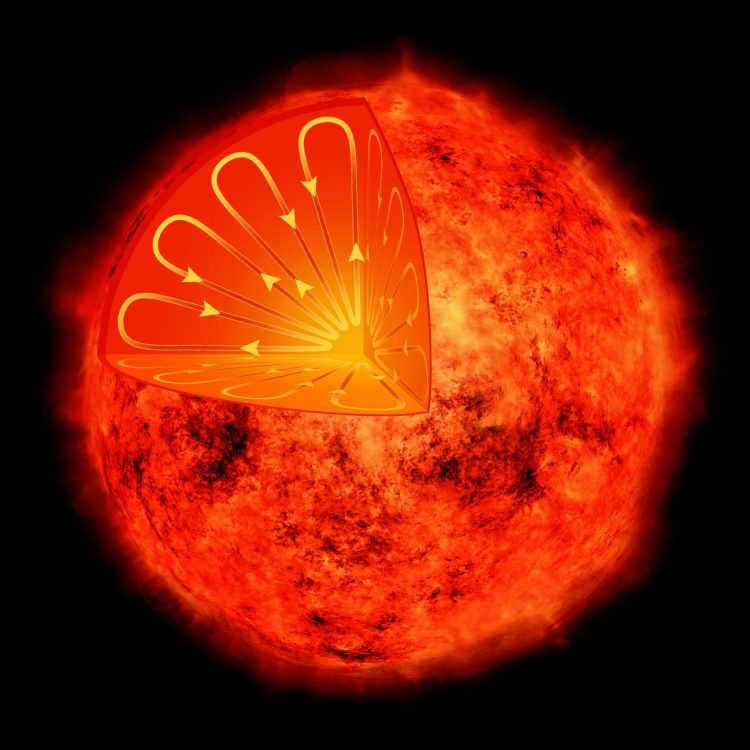
Certain active areas in some stars allow for the synthesis of helium, leading to instability and the development of strong stellar winds. As a result, the star gradually dissipates over time.
Stars with a mass below 0.5 solar masses are unable to convert helium, even after hydrogen reactions have ceased in their core. The small mass of these stars does not provide the necessary conditions for an explosive event.
An example of such a star is Proxima Centauri. These stars have lifetimes on the main sequence that range from tens of billions to tens of trillions of years.
The red dwarfs are the stars that are destined to follow this path. They gradually cool down after the cessation of thermonuclear reactions in their cores and continue to emit weakly in the infrared and microwave ranges of the electromagnetic spectrum.
Stars don’t simply vanish…
The demise of stars supplies the construction material for the universe. Inside dying stars, all the chemical elements – gold, silver, platinum, iron, and others – are formed and explode into space.
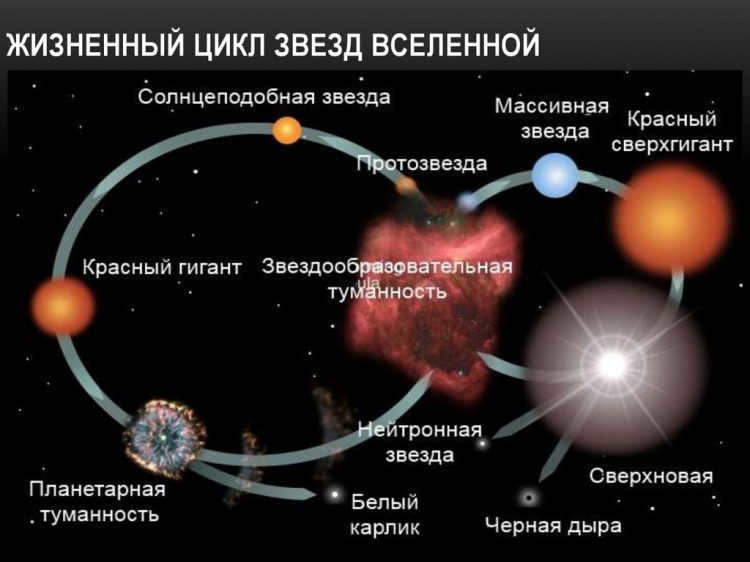
The initial stars were massive, several thousand times larger than the Sun, and were characterized by their instability. They had short lifespans, rapidly coming into existence and then dying out, leaving behind cosmic dust that was rich in various chemical elements. These stars were formed from cosmic nebulae, thanks to the energy released during the Big Bang.
In the present era, and in the future, stars will continue to be born. However, their formation will be triggered by the explosion of a supernova. The blast wave from the explosion causes cosmic dust particles to interact, causing them to move and collide, ultimately merging and growing in size.
During the initial stages, a young star and its surrounding space are filled with chaotic activity, with numerous small planets rotating in a haphazard manner. Some of these planets collide and break apart, while others grow larger by absorbing the remnants of the initial planets.
Due to these collisions, Mercury has experienced the stripping of its upper crust, leaving only its core intact.
Over the course of 500 million years, the quantity of planets diminishes while their size grows.
The Sun, although a relatively small star, will meet its end in 5 to 6 billion years following the initial scenario. Presently, 80% of the stars in the Universe are smaller than the Sun.
Video Content
It is a well-known fact that stars have a natural tendency to reach the end of their existence, which is considered to be a normal and essential process. This marks the ultimate phase in the life cycle of all celestial bodies in the vast expanse of the universe. It is worth mentioning that virtually every entity in our cosmic realm undergoes a threefold progression: birth, regular life cycle, and ultimate demise.
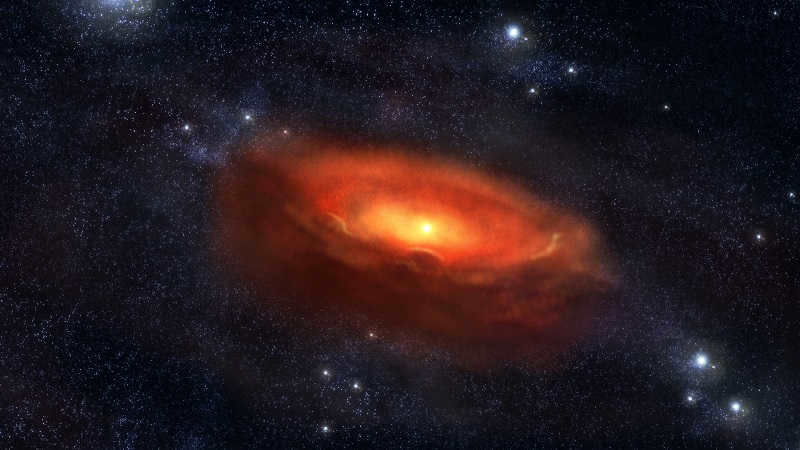
However, stars experience various forms of demise, which is a common trait shared by all things in existence.
Nevertheless, while the birth of celestial bodies may follow a somewhat similar pattern, their destiny and ultimate demise differ. The primary factors influencing their life cycle are their mass and chemical composition. These determinants dictate the thermonuclear reactions occurring within the star, which consequently shape its future existence and eventual celestial expiration.
Why do stars with greater mass die faster?
It is indeed true that stars with greater mass have a shorter lifespan. One would think that the larger mass would result in longer processes taking place. However, this is not the case for stars. The reason is that more massive stars burn through their fuel at a faster rate, producing more energy. This means that they deplete their resources of hydrogen, helium, and other substances more quickly compared to less massive stars. It is not surprising, then, that the death of a more massive star occurs much sooner and more rapidly.
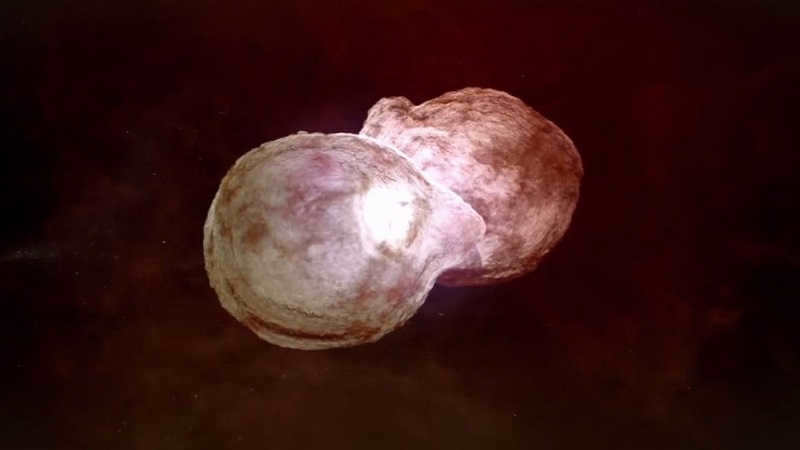
According to scientific research, smaller stars have a longer lifespan compared to their larger counterparts. Generally, red and dim stars have the most extended existence. Surprisingly, the age of these stars can be equivalent to the age of the entire Universe. Occasionally, they may experience temporary bursts of brightness before fading away.
If we compare these stars to our Sun, yellow dwarfs, which are similar in size, have a slightly shorter lifespan than their smaller counterparts. However, they have a more stable fate because they maintain a relatively consistent level of brightness.
On the other hand, stars that are several times more massive than the Sun are predicted to have a spectacular end to their existence.
Ways in which stars meet their end
Indeed, a star can meet its demise through various means.
For instance, red dwarfs ultimately go through a process of cooling down and transitioning into cold, dim entities once all of their hydrogen has been fully consumed.
When a star like the Sun reaches the end of its life, it exhausts its helium, causing its luminosity and internal temperature to rise. Similar stars then shed their outer gas envelope and become giants, eventually shedding their envelope as well. This leads to the formation of a dense and scorching white dwarf, which subsequently cools down and metamorphoses into a frigid and unilluminated object in the vastness of space.
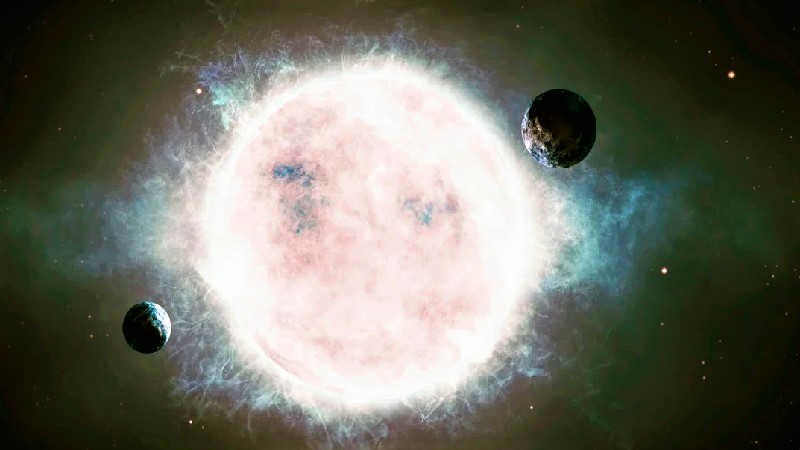
When a star’s mass exceeds seven times that of our Sun, it undergoes a series of nuclear reactions, starting with the burning of hydrogen and helium. Eventually, the star’s core begins to burn carbon and oxygen, leading to a dramatic increase in luminosity. This process culminates in a supernova explosion, releasing an immense amount of energy. During this explosion, the star’s luminosity increases by millions of times, and heavy elements are created.
Interestingly, these heavy elements and the energy released during the supernova explosion play a crucial role in the formation of new stars. The remnants of the exploded star’s core can give rise to a neutron star or even a black hole.
If stars cease to exist, it is due to necessity
The existence and demise of stars are governed by the constituent elements and the overall mass of the celestial body. As the core contracts, it experiences a rise in temperature. This phase is considered the early or fundamental stage of evolution, during which hydrogen transforms into helium. However, the supply of hydrogen is not infinite. Once it is depleted, helium is converted into carbon. Yet, even the availability of carbon is limited. In the event that the celestial body possesses sufficient mass, carbon and heavier elements ignite after the exhaustion of helium.
Evidently, a dying star always leaves behind some form of remnant. The nature of this remnant is contingent upon the star’s initial characteristics.
It can be said that the nuclei are responsible for everything. Their composition and the processes occurring within them directly influence the other attributes of the celestial body, collectively determining the life and demise of a star in the celestial realm.
Stars in the Universe come to their end in various ways, as they possess unique characteristics and differ from each other in terms of various parameters.
Occasionally, deceased stars play a role in the creation of new life or contribute to the formation of other celestial bodies.
